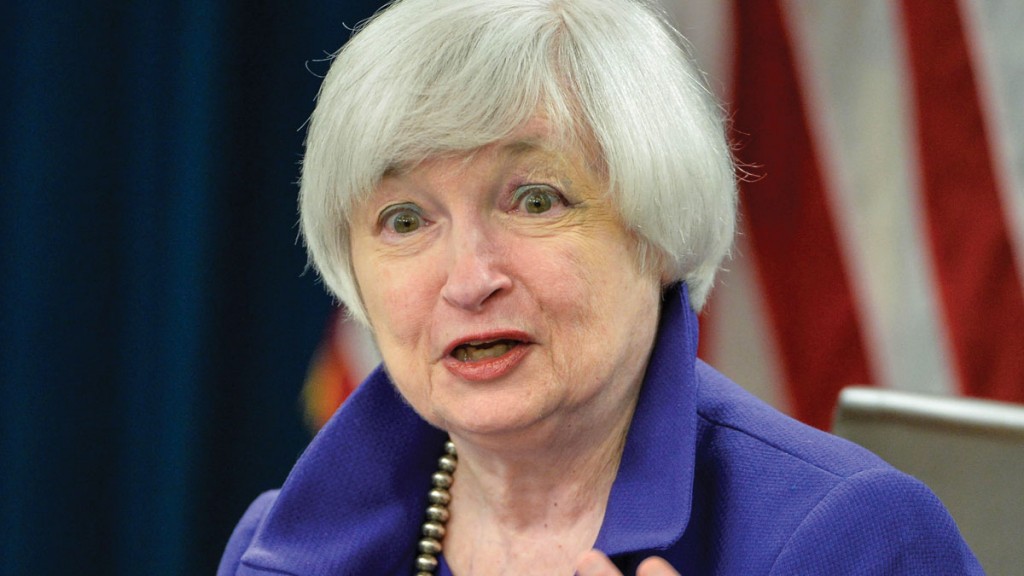
Good news for investors trying to work out the US Federal Reserve’s next interest-rate move, says Justin Lahart in The Wall Street Journal. It’s just become a lot easier to predict. “The bad news is why.” In May, US payrolls grew by a mere 38,000, the worst month since 2010. Markets had pencilled in 160,000.
The unemployment rate tumbled from 5% to 4.7%, but only because the labour force shrank as disenchanted workers gave up looking for jobs. Markets have repriced the odds on a rate hike later this month to 4% from 32% a week ago; the odds for a July move have fallen from around two thirds to one third.
The job market is a lagging indicator, says a Wall Street Journal editorial, and it may now be starting to reflect the slowdown seen towards the end of last year and in early 2016. The average payroll growth seen in the past three months is 116,000. That’s quite a step down from the 200,000-plus typical of the past few years.
But are investors overreacting to signs of a slowdown? The economy is not “suddenly plummeting into recession”, says Capital Economics. The latest data suggest that GDP “has clearly accelerated in the second quarter”. Payroll employment is very volatile; there have been plenty of occasions in the past few years when it has bounced strongly after dipping below 100,000.
The figures are also prone to significant revisions, while other labour market indicators still look healthy. Annual earnings are growing at 2.5%. And a 5% unemployment rate is widely considered the threshold at which labour market slack has run out, implying a lasting acceleration in wage growth.
Still, “investors can reasonably expect interest rates will stay on hold until November”, says the FT’s Michael Mackenzie. There always appears to be some excuse. Yellen noted that the UK referendum could have “significant economic repercussions”, and there may not be enough data by the July Fed meeting to convince it that the economy has definitely strengthened. Acting as the presidential election draws near could fuel concern over political interference.
Yet as we have regularly pointed out recently, keeping interest rates steady for months on end runs the risk of inflation taking off. Give the sheer debt load in America and global economies, the Fed is probably quite happy to create some inflation; it is by far the most painless way to work off borrowings. But given central banks’ track record, the odds of it flaring up suddenly look high. That would necessitate a steep rise in the cost of money – and cause a nasty slump in asset markets.
Corporate America’s borrowing binge
“Consumers were the Achilles heel of the US economy” in 2007, says Rich Miller on Bloomberg.com. When this cycle ends, companies may be the key culprits. America Inc. has been on a borrowing binge, and too much debt bodes ill for spending and hiring. Encouraged by ultra-low interest rates, companies have increased their debt by almost $3trn to a record $6.64trn in the past five years.
It’s often pointed out that companies are also sitting on a record $1.84trn of cash, notes Miller. But this is concentrated among a few big, mostly tech, firms, led by Apple’s $220bn pile. Strip out the $945bn held by the 25 richest firms, and the other non-financial companies’ cash-to-debt ratios are at a decade low. Nor does it bode well for long-term growth that much of the money isn’t going into business investment. Since 2009 the S&P 500 companies have spent $2trn buying back shares or taking over rivals.
The worry is overdone, says Ben Levisohn in Barron’s. In the S&P 500, net income is 9.4 times interest payments, well above the long-term average of 6.5 times. Interest expense is at a record low of 3.9%, thanks to the zero interest-rate policy. Moreover, almost 90% of the S&P 500’s debt is long term – due in seven years or later. Only 10%-15% of the index’s $3.6trn in long-term debt rolls over each year, so even a 1% hike in rates would have little impact. Don’t lose any sleep over the corporate debt bomb.